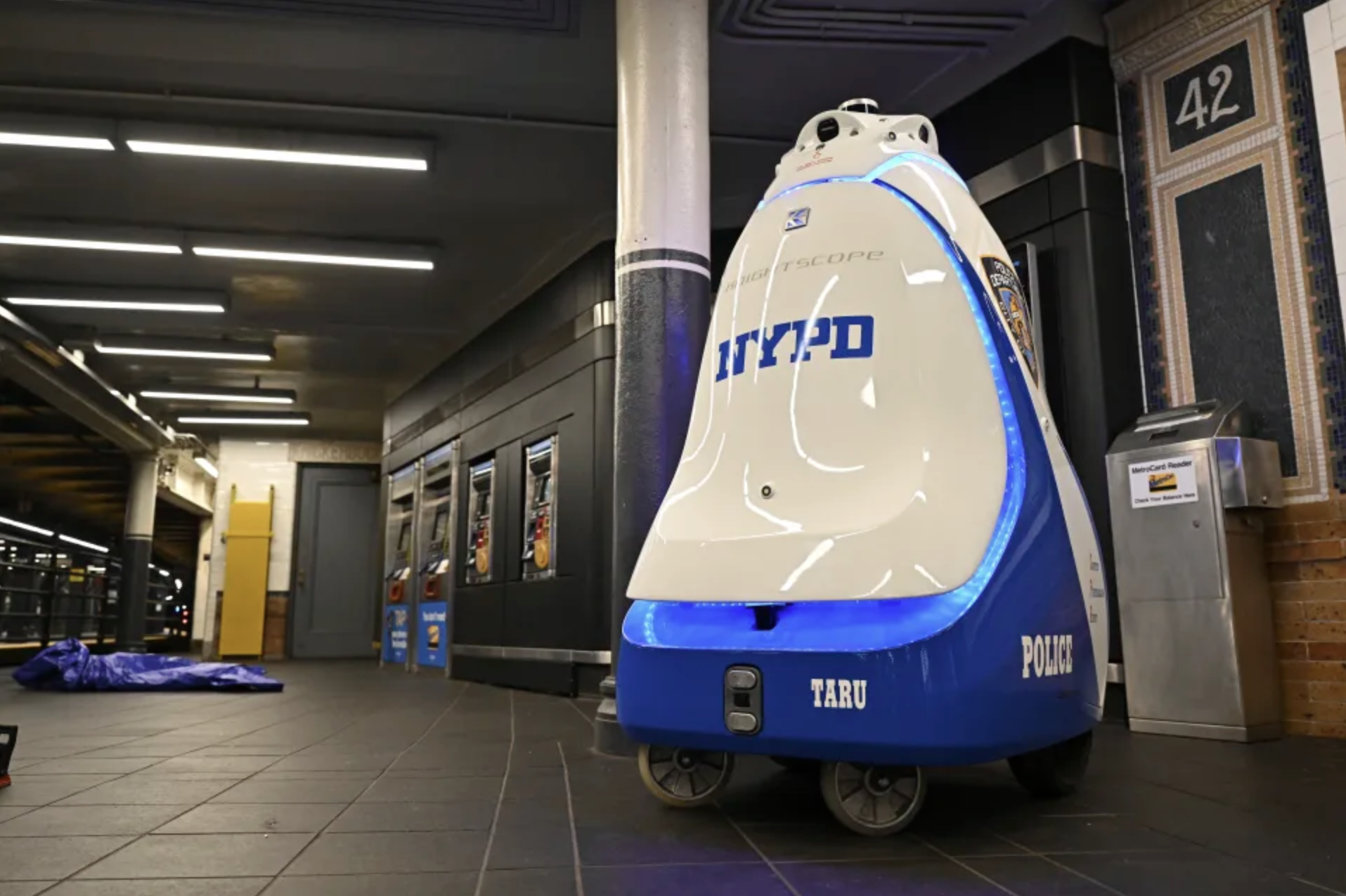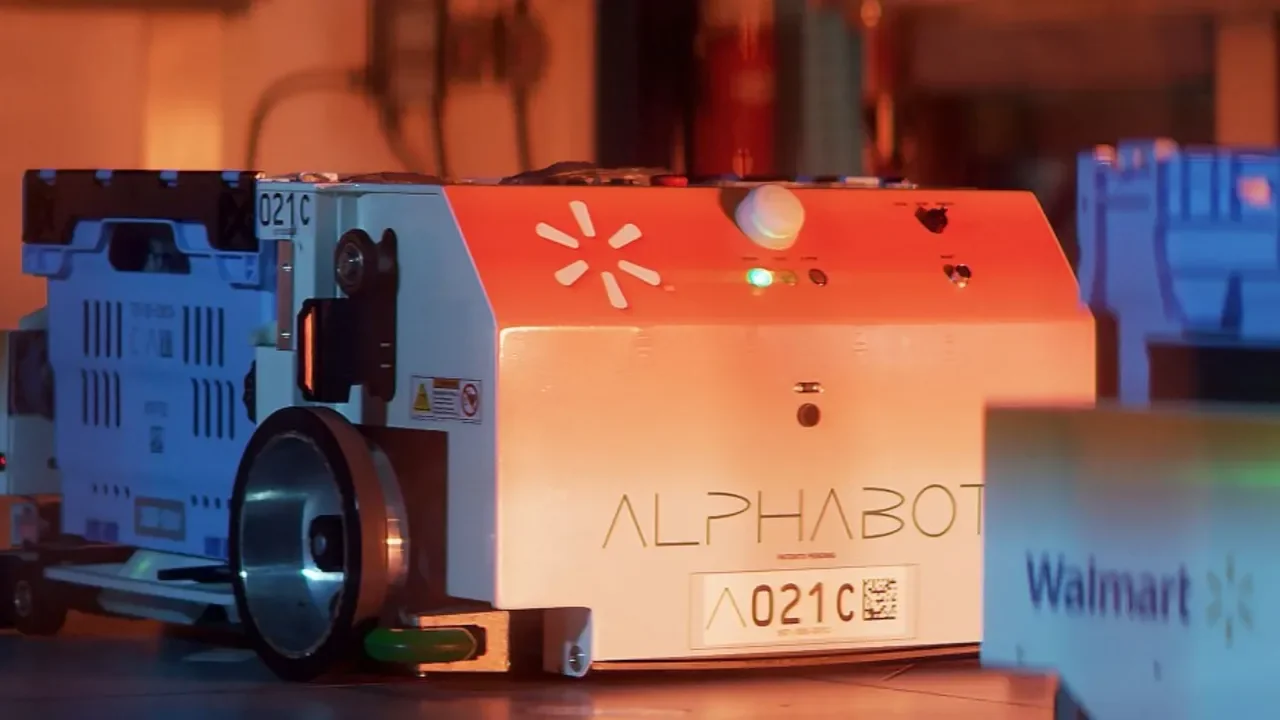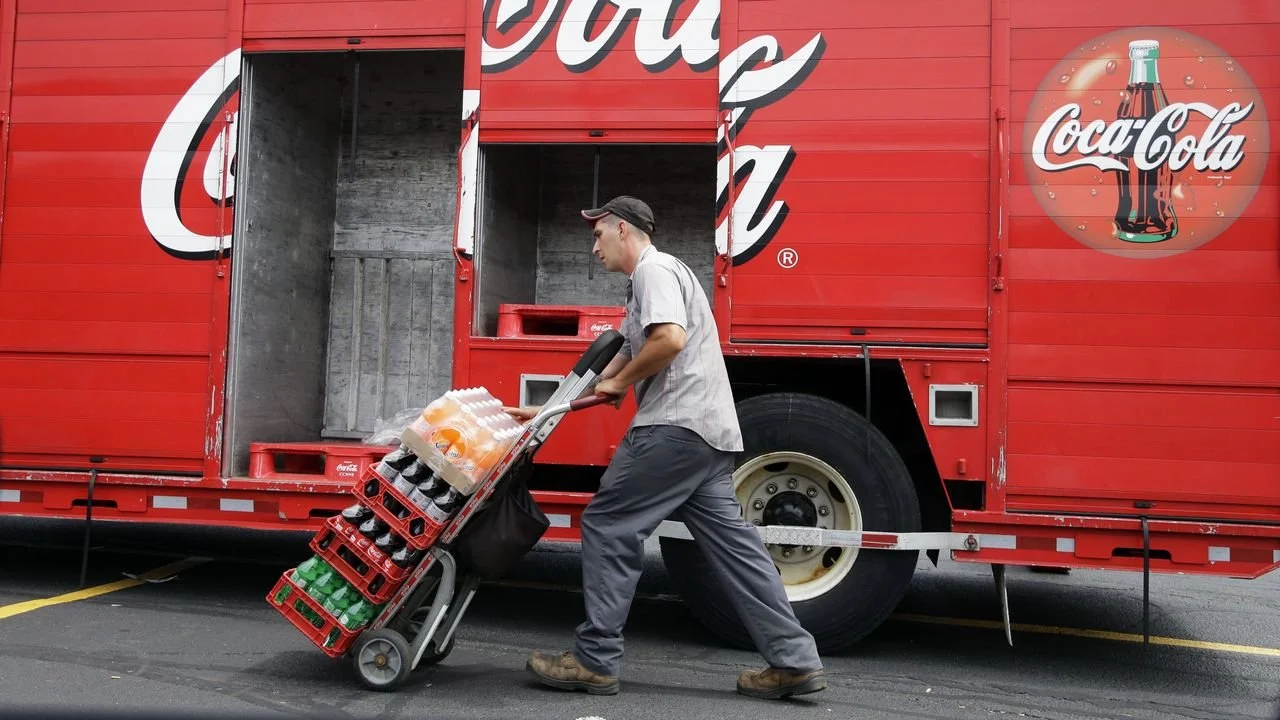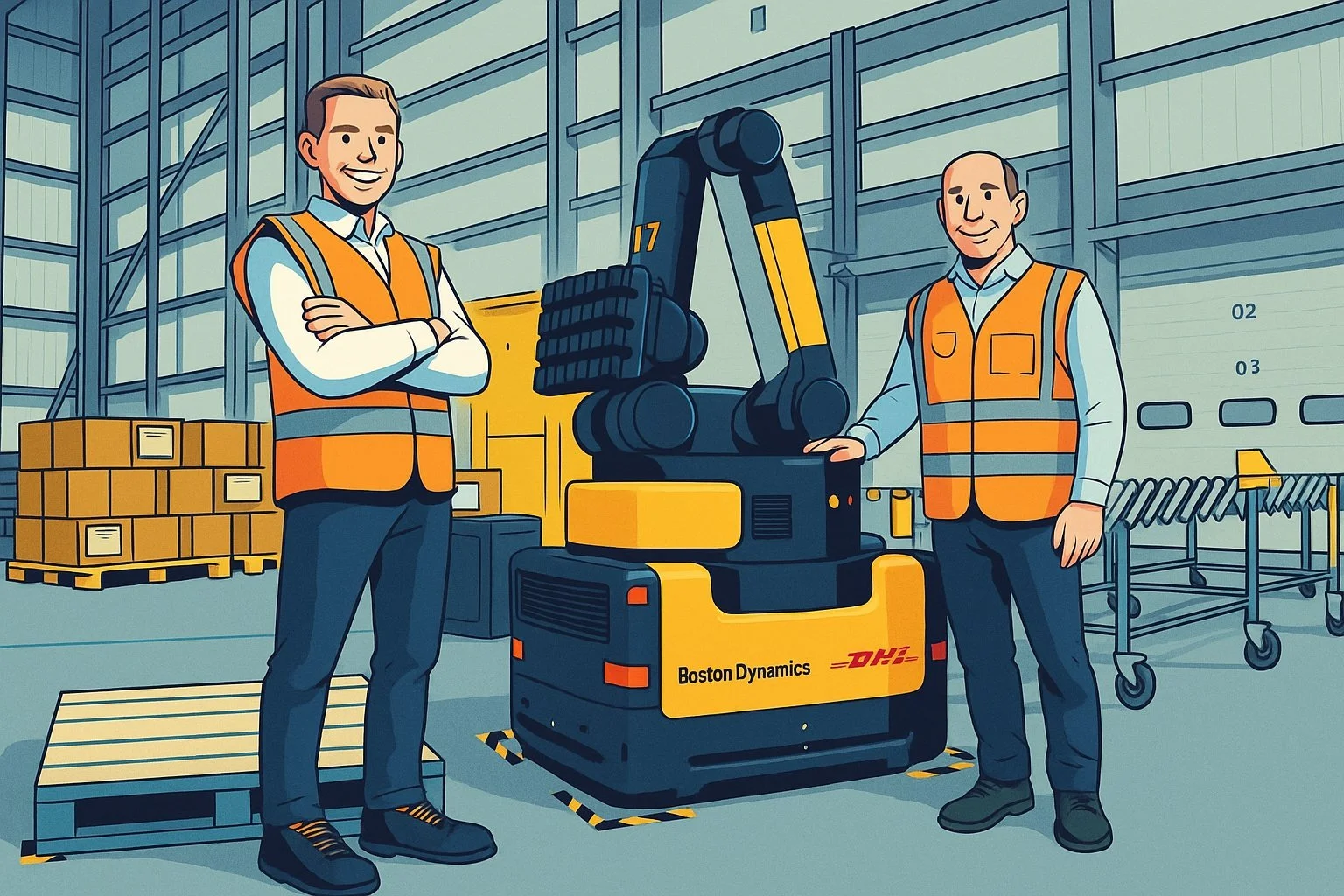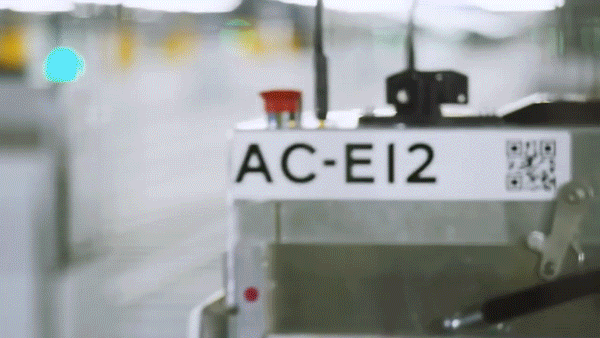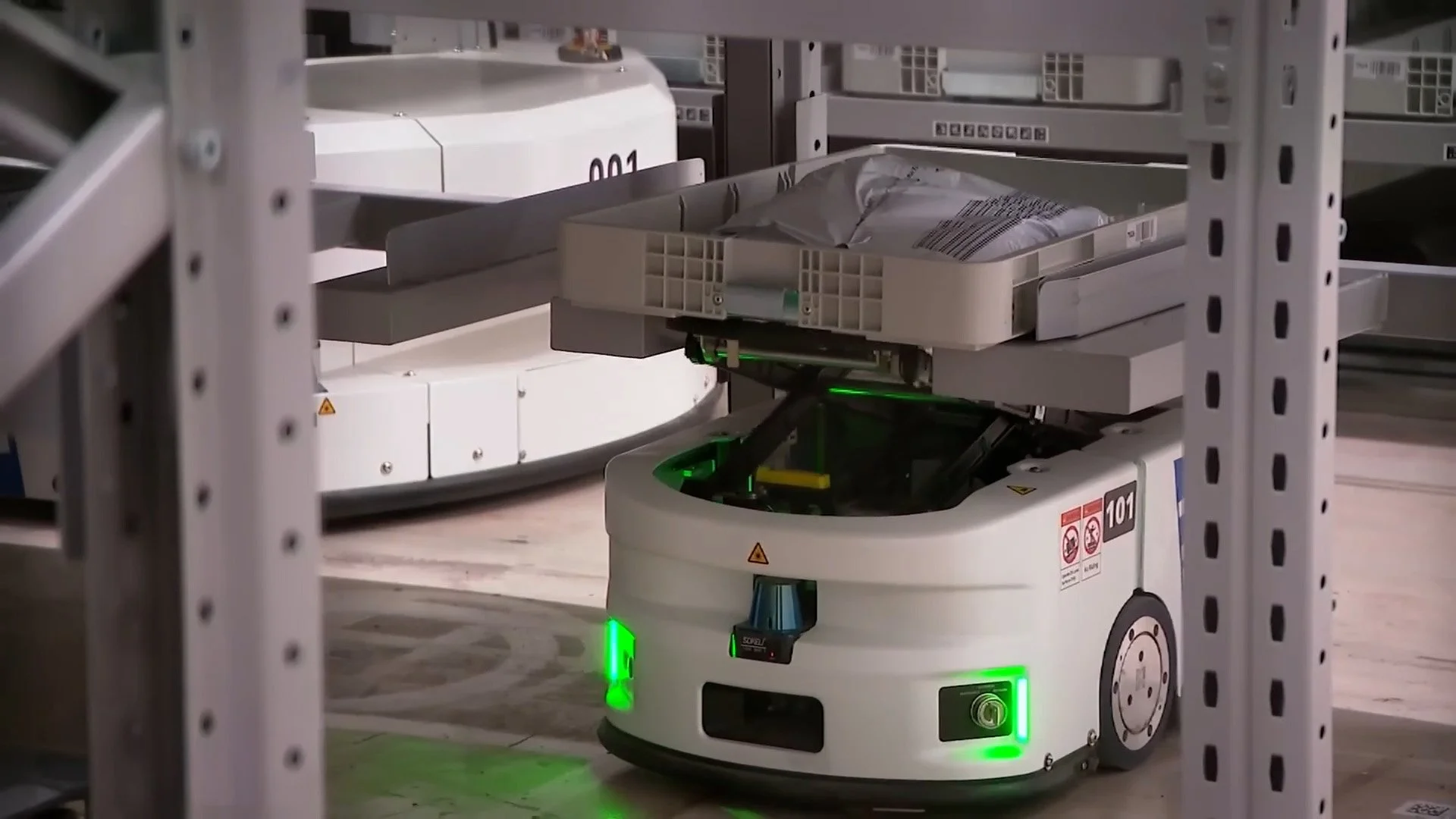Goodbye for Now to the Robot That Patrolled New York’s Subway
The New York Police Department’s Knightscope K5 debuted in Times Square amid fanfare from Mayor Eric Adams. It ended its brief tour exiled to a vacant storefront, all alone.
New Yorkers can say goodbye — for now — to the robot the New York Police Department (NYPD) used to patrol the Times Square subway station. The Knightscope K5, which is a 400-pound machine that looks like it could be R2-D2's massive sibling, was one of Mayor Eric Adams' high-tech experiments for New York City. It was deployed in a pilot last year ostensibly to help keep commuters safe, but it had no actual capabilities that could be useful in situations that had to be addressed on site. "The K5 Knightscope has completed its pilot in the NYC subway system," a spokesperson for the department told The New York Times.
The K5 has cameras that can record video and a button that people can press to get in touch with a live agent. It patrolled the station from midnight until 6AM throughout its trial run that lasted for two months, though "patrolled" might be a generous way of putting it. The machine has no arms and can't go up or down the stairs. Commuters told The Times that it usually has a couple of cops with it and that it almost always seemed to be plugged in.
New York leased the K5 for around $9 an hour during its trial phase that ended in December. "This is below minimum wage," Adams said when he announced the robot's deployment at the Times Square station. "No bathroom breaks, no meal breaks." At the time, privacy advocates had been concerned that the machine could eventually be equipped with facial recognition and other surveillance tools. They no longer have to worry about the K5 being used for surveillance in NYC, unless, of course, city officials decide to keep on leasing it for other purposes. A Knightscope spokesperson told The Times that the company is "not authorized to speak about certain clients," which presumably includes the NYC government.
NYPD Removes Robot from Times Square Subway - NY Times Story
The New York Police Department robot sat motionless like a sad Wall-E on Friday morning, gathering dust inside an empty storefront within New York City’s busiest subway station.
No longer were its cameras scanning straphangers traversing Times Square. No longer were subway riders pressing its help button, if ever they had.
New York City has retired the robot, known as the Knightscope K5, from service inside the Times Square station. The Police Department had been forced to assign officers to chaperone the robot, which is 5 feet 3 inches tall and weighs 400 pounds. It could not use the stairs. Some straphangers wanted to abuse it.
“The K5 Knightscope has completed its pilot in the NYC subway system,” a spokesman for the department said in an email.
On Friday, the white contraption in Police Department livery sat amid a mountain of cardboard boxes, separated from the commuting masses by a plate-glass window. People streaming by said they had often been mystified by the robot.
“I thought it was a toy,” said Derek Dennis, 56, a signal engineer.
It was an ignominious end for an experiment that Mayor Eric Adams, a self-described tech geek, hoped would help bring safety and order to the subways, at a time when crime remained a pressing concern for many New Yorkers.
The K5 was meant to deter crime and give commuters a way to report it. But many were mystified by its bulbous presence.
The robot was to have been an extra set of eyes in a system where ridership remains well below prepandemic levels. Its squat presence was supposed to deter crime, and its communication abilities would provide a way for straphangers in distress to seek help.
“Eventually, this is going to be part of the fabric of our subway system,” Mr. Adams said in September, when he hailed the robot’s arrival in Times Square, part of a monthslong pilot project that he said was costing the city only $9 an hour.
“This is below minimum wage,” Mr. Adams said. “No bathroom breaks. No meal breaks. This is a good investment.”
But on Friday, Jose Natera, 49, a construction worker, said he would usually see two police officers awkwardly standing next to the robot under Seventh Avenue.
“Who cared for who,” he asked. “The robot for the police, or the police for the robot?”
Kelvin Caines, a security officer, said he never saw the robot making the rounds. Instead, it sat plugged into a charging station and people posed next to it for selfies.
The officers “never let it do anything,” he said. “They could at least walk it down the hallway.”
The city has been leasing the robot from Knightscope, a Mountain View, Calif.-based company. Last April, when the mayor first announced it had come to New York, his office said the city had struck a seven-month contract with the company, which included three months to prepare the device for use and four months to test it, all for the cost of $12,250.
On Friday, Charles Lutvak, a spokesman for the mayor, said that the K5 had in fact been on a six-month deployment ending in March and its tour at the Times Square station ended as planned at the start of December. He said the robot had worked a shift from midnight to 6 a.m.
“The Adams administration is constantly exploring innovative technologies that can advance the work we’ve done to bring down crime and keep New Yorkers safe, while maximizing the use of taxpayer dollars,” Mr. Lutvak said. “We are reviewing options for the K5’s next deployment as part of the pilot.”
The mayor had said the robot would not use facial recognition technology, but its arrival immediately sparked concern among civil libertarians, who warned that it was the harbinger of an ever-more-dystopian surveillance society and would further infringe upon New Yorkers’ privacy.
Last year, the Legal Aid Society asked that the Police Department’s use of surveillance technology be investigated, arguing that it was violating a city law requiring it to disclose how new technology is being used and how data is protected.
On Thursday, Shane Ferro, a staff lawyer with the group’s Digital Forensics Unit, said that the Adams administration was “distracted by false claims of high-tech solutions to age-old issues.”
The mayor has a longstanding interest in novel, if not outlandish, technologies. As Brooklyn borough president, he touted a lasso-like device called BolaWrap that was designed to incapacitate emotionally unstable people. His friend Frank Carone had invested in the company. Mr. Carone would go on to serve as Mr. Adams’s chief of staff in City Hall.




